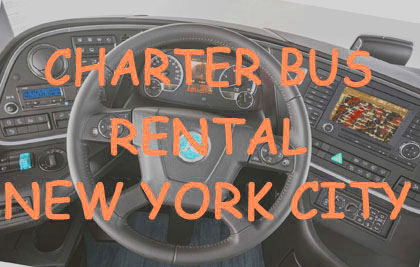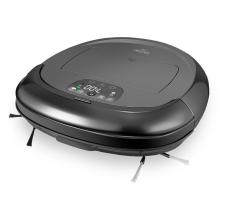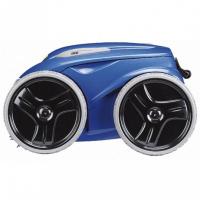Over the past decade, the world has witnessed intellectual advancements in various fields, ranging from smart homes and pervasive video surveillance to fire suppression systems and access control, all equipped with "brains."
This list also includes entry doors, which, thanks to biometric locks and remote control, have acquired new intelligent features. Now, in addition to basic operations such as "open-close-peek through the peephole," doors play the role of an intellectual outpost, providing additional smart capabilities.
Advantages of Smart Doors: Security and Convenience in One Package
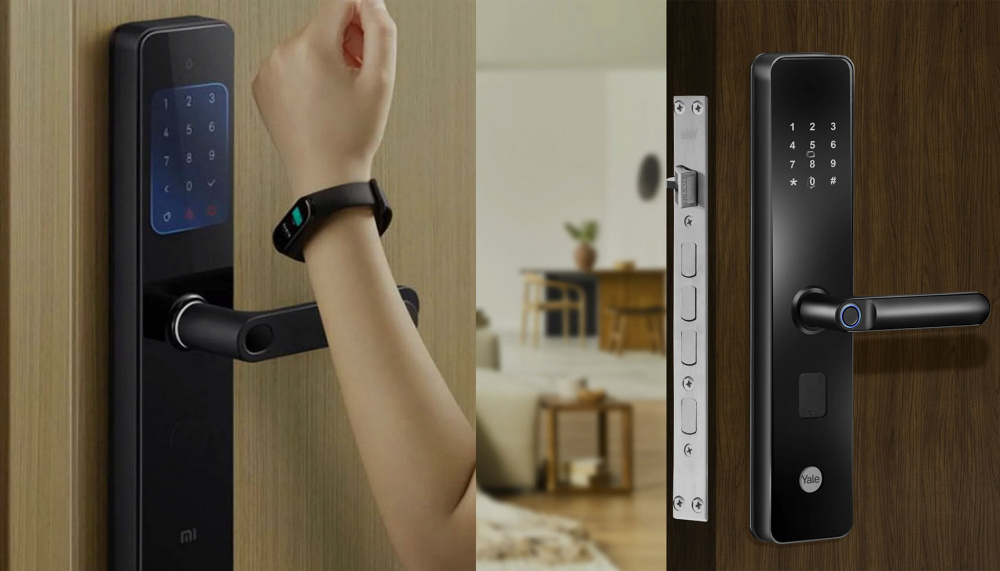
A fresh perspective on home security transforms smart interior doors into more than just an impenetrable barrier with a mega-complex lock (as experienced criminals, armed with lock-picking tools, can easily overcome such challenges). These are innovative technologies available today.
More information about entry doors can be found in the catalog of IndigoDoors company.
Guaranteed Security
Choosing smart doors prioritizes the question of security. Unlike mechanical locks, bypassing a biometric lock or using lock-picking tools becomes virtually impossible. Even in the case of a forced break-in (through destruction or cutting with a grinder), the door remains securely locked.
Remote Control
The Internet of Things principle is actively implemented in smart doors. By installing an application on your smartphone, you gain the ability to control the door from anywhere in the world – opening, closing, changing access codes, and monitoring the visitation log.
Maximum Daily Convenience
Smart doors significantly simplify everyday tasks, from eliminating the need to search for keys before entering to ensuring the protection of property (and in certain cases, the lives of residents) from unwarranted intrusions. Granting access to relatives and friends does not require the transfer of physical keys or the creation of duplicates – a simple click in the application is sufficient.
Resolution of Potential Issues with Smart Doors
When choosing smart doors, it is crucial to consider potential challenges, but confidence in their resolution plays a key role. Below are potential difficulties and ways to overcome them, based on the experience of Proline specialists:
- Fingerprint Recognition Issue
The ability to register multiple fingerprints addresses this problem. Additionally, it is important to note that alternative options such as a code or a physical key can be used if necessary. - Battery Discharge
The application provides warnings about the need to replace batteries, making this process transparent and easy to resolve. - Possible Lock Breakage
While criminals may attempt to break the lock with a hammer, this does not lead to a successful intrusion. The bolts remain undamaged, ensuring reliable protection.
It is important to understand that any technology may encounter issues, but proper handling and transparent resolution mechanisms make smart doors not only convenient but also reliable in everyday life.
Intelligent technologies responsible for smart doors include
Biometric Lock
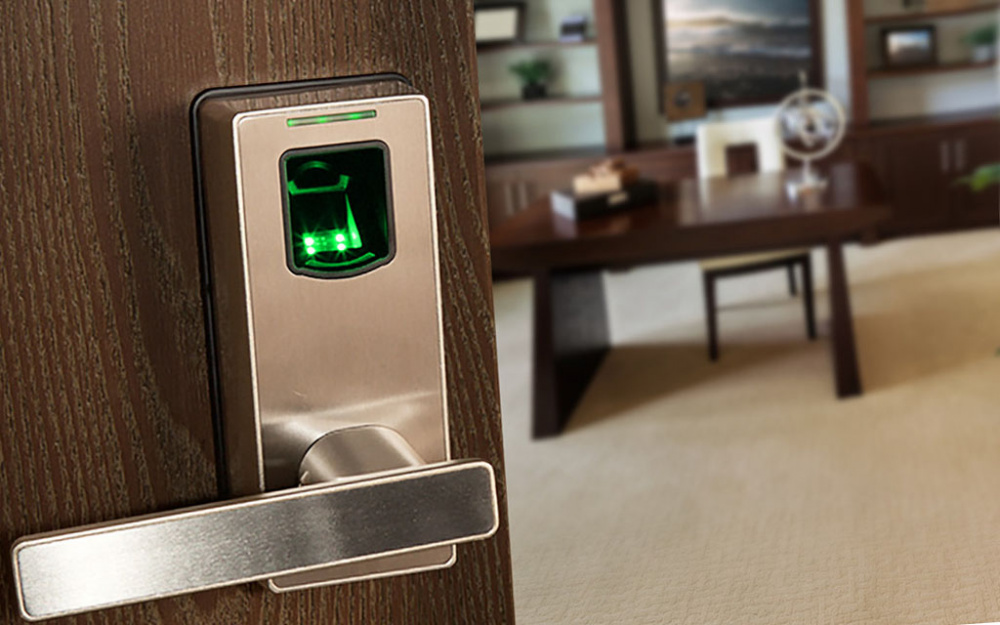
Similar to the fingerprint scanner on a smartphone, the biometric lock on smart doors provides the highest level of security.
It can memorize biometric data for almost a hundred individuals, making smart doors an ideal solution for large families or small offices. Locking options include:
- Opening/closing the door using a fingerprint.
- Setting a combination of biometrics and a regular key. Entering an additional password upon entry.
- Using a mechanical key in emergency situations.
- The biometric lock is typically equipped with its own software, and no wiring is required for its operation – it functions on four AA batteries.
- A week before the batteries are depleted, the lock automatically alerts about the need for replacement.
These technologies ensure a high level of security, convenience, and flexibility in the use of smart doors.
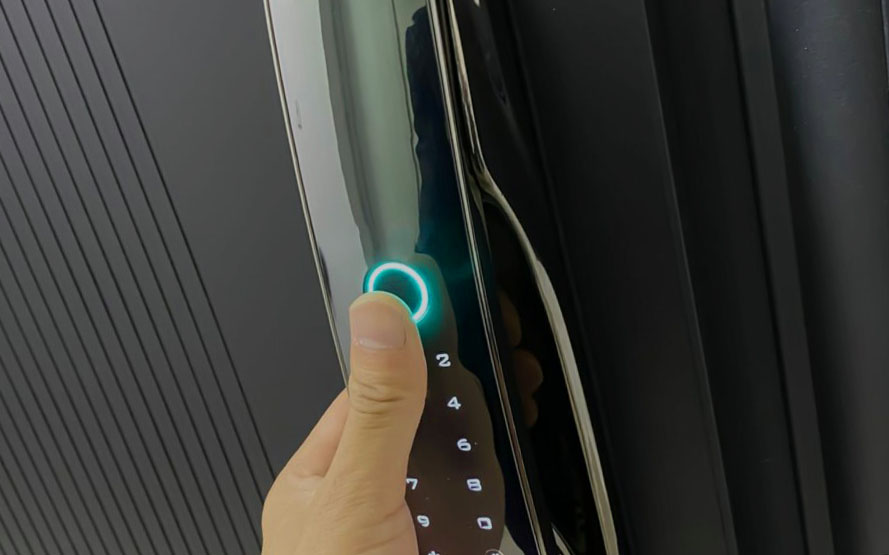
Intercom, Video Surveillance, and Other Integrated Technologies for Smart Doors
-
Intercom and Video Surveillance
These systems allow homeowners to observe activities around the door. A camera installed on the external side of the door functions as a discreet peephole with recording capabilities. The ability to adjust brightness and contrast of the image, along with a touch display, enables identification of individuals outside without the need to peer through the peephole. -
Motion Sensor
A proximity sensor within a distance of less than a meter activates the keypad. If the sensor detects someone standing in front of the door for more than a minute, an alarm will sound, alerting the owners and neighbors of a potential threat. This feature can be temporarily disabled if necessary. -
Door Locking
The smart lock automatically secures the door within 3 seconds after you close it. The night lock feature provides an additional sense of security, preventing the door from being opened from the outside. -
Safety in Emergency Situations
In the event of a fire or smoke, the fire sensor triggers an alarm, indicating the exit route. In case of vandalism on the door, such as impacts or attempted break-ins, the alarm sounds, and the lock operation is blocked, effectively deterring potential intruders in 99% of cases.
These technologies offer a comprehensive approach to security and access management, making smart doors not only intelligent but also relia

